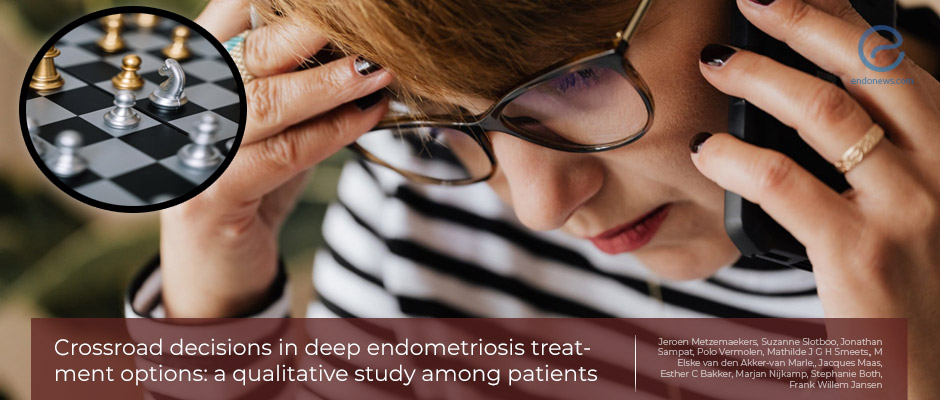Deep endometriosis treatment options based on the patient's decision
Jan 18, 2021
Quality dimension in healthcare guided by the values, preferences, and needs of the patient.
Key Points
Importance:
- Patient centeredness is an important quality measurement and guides the values of preferences on behalf of the patient.
Highlights:
- Gynecologists need to counsel patients optimally by providing as much as extensive information about the pros and cons of each treatment option and support the shared-decision making process.
What's done here:
- A qualitative study designed by Netherlands University Medical Center, using semi-structured in-depth focus group methodology.
- This research includes 16 Dutch-speaking women with a diagnosis of deep infiltrating endometriosis between 27-47 ages who replied to e-mails.
- Three separate focus groups of patients, named FG1, FG2, and FG3, with the aim to include 5-8 patients in each group, and disconnected from each other. FG1 group of patients were prior to decision whereas, the other two groups were after the decision or treatment.
- Different questionnaire forms were submitted to the groups.
Key Results:
- These group studies reconfirmed that endometriosis has a major negative influence on sexual functioning, psychological health, and social life.
- The important decisive factors for the patients during the choice of treatment are pain, fertility, and strong fear.
- More than 60% of the complete group were satisfied with the treatment decision they previously made.
- FG2 group patients did not experience any complication after their treatment process and as a final result, they were all satisfied.
Strength and Limitations:
- The strength of the study is focus groups are composed only of patients with deep infiltrating endometriosis.
- For group FG1, The study conducted before the operation and it is not clear how they had their deep endometriosis diagnosis, laparoscopically, or only clinically.
- The pre and postoperative group separation could have led to a dominant influence on the data of a postoperative group of women.
- Being a pilot study, the focus groups are small.
Lay Summary
Deep endometriosis, defined as endometriotic lesions penetrating deeper than 5 mm into the peritoneum comprise approximately 20% of all endometriosis cases. This invasive disease causes a significant reduction in the quality of life, social participation, and sexual health of affected women.
Conservative therapy and surgical approach could be discussed with the women who faced to cope with the disease. Failure of hormonal therapy, and the side effects such as weight gain, a decrease of libido, mood swings, headache, and the possibility of refusal to take related chronic medication due to the contraindications like deep vein thrombosis, heart disease,.. are on the table. On the other hand, deep infiltrating endometriosis surgery has a 14% complication rate according to the literature, that includes enterotomy, anastomosis leakage, urinary tract damage, fistula formation, and even persistent stoma. As a result, making a decision for the treatment for women diagnosed with deep endometriosis is complex and challenging. The choice between the options is related to their actual or future wish to conceive, pain reduction, but also the unique individual risk-benefit profiles of the patients. To get this understanding from the point of the patient's perspective qualitative studies are needed.
The team led by Prof. Jansen from the Department of Gynecology, Leiden University Medical Centre, the Netherlands, designed a qualitative study using semi-structured in-depth focus groups to demonstrate the important factors to decide the way of treatment with women with deep infiltrating endometriosis. The authors reported pain, fertility, and strong fear of complications are the main decisive factors in the treatment process. Women included in the study reported that the potential consequences of their decisions depend on the support of their partners even though the final decision was made by themselves. The quality of information the women get about their disease and the doctor-patient relationship was the most valuable part of the study that provided them the decision-making process.
The authors clarified the necessity of improvement for sharing the decision-making process with their patients by giving detailed information in exploring the treatment goals. This paper was published online in October 2020, ahead of print in "Fertility and Sterility".
Research Source: https://pubmed.ncbi.nlm.nih.gov/33070963/
decision making focus groups qualitative search doctor-patient relationship endometriosis patient satisfaction

